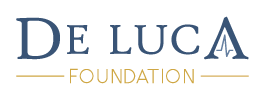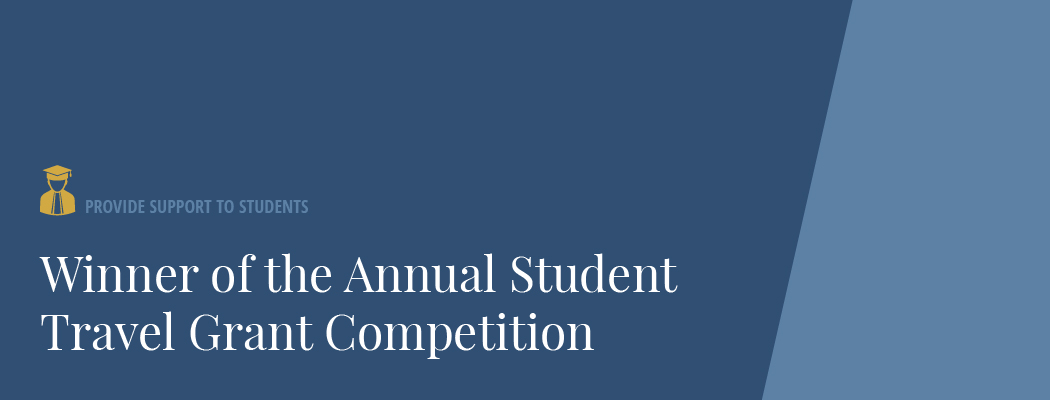The De Luca Foundation would like to congratulate the 25 winners of the 2016 Student Travel Grants! They were selected among a pool of 140 applications of impressive quality. This is a testament to all of the applicants’ hard work to put out high-caliber research and push the boundaries of their respective scientific fields.
We thank all that applied for the 2016 Student Travel Grant, and we invite all students to consider applying for the Student Travel Grant in 2017.
Applications will open towards the end of the calendar year. Check the Student Travel Grant page for details.
List of 2016 Winners
American College of Sports Medicine
Zachary Pope
Oklahoma State University
“Action Potential Amplitude as a Non-Invasive Indicator of Motor Unit Specific Hypertrophy”
Michael Trevino
University of Kansas
“Type I Myosin Heavy Chain Expression Influences Motor Unit Behavior of the Vastus Lateralis in Vivo”
Tiffany deVries
Brigham Young University
“Central Nervous System Activation in Blood Flow Restricted Exercise: A Pilot Study”
Scott Habowski
Kent State University
“Identification of Candidate Genes Contributing to Exercise Performance Phenotype Using Bioinformatics Analysis”
Kristamarie Pratt
University of Southern California
“Wearable Sensors Can Detect Knee Loading Asymmetries: Applications for Clinical Use”
Yong Woo An
University of Delaware
“Asymmetric Cortical Activity Between Limbs During Joint Loading”
Kevin Valenzuela
University of Tennessee – Knoxville
“Differences in Lower Limb Kinematics in Relationship to Changing Running Velocity”
Quint Berkemeier
Colorado Mesa University
“Muscle Activation in Seated and Standing Uphill Cycling”
Amanda Stone
University of Florida
“Posterior Center of Pressure Displacement Is Predictive of Gait Speed”
Shane Draper
Kent State University
“Effect of Acute Exercise on Mood and Cardiovascular Variables between Normoxia and Normobaric Hypoxia”
American Society of Biomechanics
Nina Carson
Humboldt State University
“The Effect of Lean on Running Kinematics and Muscle Activation”
Brian Cone
The University of North Carolina at Greensboro
“Postural Control Complexity is Associated with Enhanced Balance and Improved Vestibular Function Following a Balance Intervention”
Jack Martin
University of Wisconsin – Madison
“Ultrasonic Imaging of in Vivo Achilles Tendon Stress During Walking”
Joseph Mozingo
Mayo Clinic
“Accuracy of a 3D-2D Imaging-Based Approach for Quantifying Shoulder Motion Using a Clinically-Available Biplane Fluoroscope”
Christopher Nagelli
Mayo Clinic
“Longitudinal Effect of Nerve Block on Gait Mechanics following Anterior Cruciate Ligament Reconstruction: A Prospective Randomized Control Study”
Mohammad Moein Nazifi
Texas A&M University
“Correlation Between Slip Severity and Muscle Synergies of Slipping”
Tyler Richardson
University of Delaware
“A Comparison of Model-Predicted Muscle Activations with Electromyography during Shoulder Abduction”
Mariah Whitmore
Northwestern University
“Estimation of Ankle Impedance When Walking on a Slippery Walkway”
Chase Rock
University of Nebraska at Omaha
“Relationship Between Push-off Work and Stride-to-Stride Fluctuations in Transtibial Prosthesis Users”
Michael Vignos
University of Wisconsin – Madison
“In Vivo Measurement of Tibiofemoral Kinematics and Cartilage Contact Following ACL Injury: Baseline Results of A Longitudinal Investigation”
European College of Sport Science
Pedro Fatela
University of Lisbon
“Neuromuscular Fatigue Depends On Relative Blood-Flow Restriction Levels”
Håkon Stålesen
University of Adger
“The Effect of a Failure- and Submaximal Protocol on Muscle”
Nicholas Tam
University of Cape Town
“Barefoot Running Training: Implications for Joint Stiffness and Muscular Co-Activation”
Society for Neuroscience
Agostina Casamento-Moran
University of Florida
“Low-Frequency Oscillations in force slow reaction time”
Seyedeh Fatemeh Khatami Firoozabadi
University of Connecticut
“Neural Coding and Discrimination of High-Order Sound Statistics in the Inferior Colliculus”

